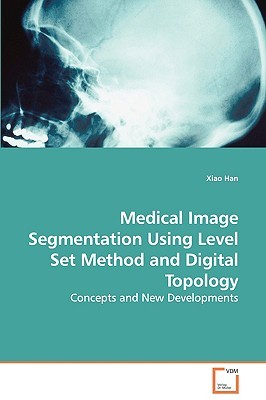
- We will send in 10–14 business days.
- Author: Xiao Han
- Publisher: VDM Verlag
- ISBN-10: 3639111184
- ISBN-13: 9783639111187
- Format: 15.2 x 22.9 x 1.2 cm, softcover
- Language: English
- SAVE -10% with code: EXTRA
Medical Image Segmentation Using Level Set Method and Digital Topology - Concepts and New Developments (e-book) (used book) | bookbook.eu
Reviews
Description
Recent developments in medical imaging technology have changed the practice of medicine, providing physicians with powerful, non-invasive methods for studying the internal anatomy and function of the human body. These advances in imaging techniques offer both a great opportunity and a tremendous challenge for the image processing community to develop new tools to help the analysis and interpretation of the vast amount of complex medical imaging data. The work presented in this book is motivated by the fascinating task of studying the structural and functional relationship of the human brain, with the specific aim of developing geometrically accurate and topologically correct methods for automatic segmentation of 3D magnetic resonance brain images. Several new methods are reported in this book, which should help provide new insights in understanding the medical image segmentation problem and the challenges it poses, and help promote future development in the fields of image processing, signal processing, computer vision, and medical imaging.
EXTRA 10 % discount with code: EXTRA
The promotion ends in 18d.06:07:55
The discount code is valid when purchasing from 10 €. Discounts do not stack.
- Author: Xiao Han
- Publisher: VDM Verlag
- ISBN-10: 3639111184
- ISBN-13: 9783639111187
- Format: 15.2 x 22.9 x 1.2 cm, softcover
- Language: English English
Recent developments in medical imaging technology have changed the practice of medicine, providing physicians with powerful, non-invasive methods for studying the internal anatomy and function of the human body. These advances in imaging techniques offer both a great opportunity and a tremendous challenge for the image processing community to develop new tools to help the analysis and interpretation of the vast amount of complex medical imaging data. The work presented in this book is motivated by the fascinating task of studying the structural and functional relationship of the human brain, with the specific aim of developing geometrically accurate and topologically correct methods for automatic segmentation of 3D magnetic resonance brain images. Several new methods are reported in this book, which should help provide new insights in understanding the medical image segmentation problem and the challenges it poses, and help promote future development in the fields of image processing, signal processing, computer vision, and medical imaging.


Reviews